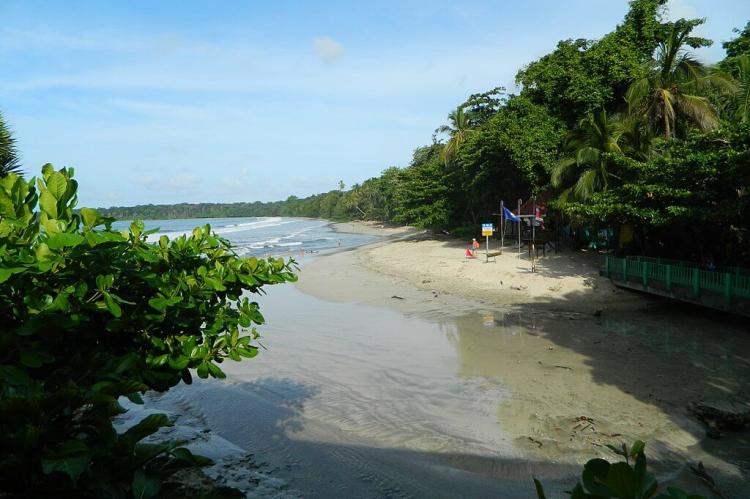Cahuita National Park (Costa Rica)
Cahuita National Park is a pristine and biodiverse protected area located in the Limón Province on the Caribbean coast of Costa Rica, established to protect the country's largest coral reef. Home to several indigenous communities, it is part of the La Amistad International Park UNESCO World Heritage Site.
Cahuita National Park
Cahuita National Park is a pristine and biodiverse protected area located in the Limón Province on the coast of the Caribbean Sea in Costa Rica, approximately 43 km (27 mi) southeast of Limón.
Established in 1970, Cahuita was one of the first protected areas in Costa Rica. Today, it is one of the smallest national parks in the country, covering a land area of 1,106 ha (2,732 acres) and a marine area of 22,300 ha (55,200 acres).
Cahuita National Park was established to protect the largest coral reef in Costa Rica, hosting over 35 coral species and more than 500 fish species. The protected area is crucial in conserving the Caribbean coast's delicate marine ecosystems and tropical rainforests.
Cahuita National Park is also home to several indigenous communities. The Bribri people have lived in the area for centuries and continue practicing their traditional way of life. Visitors can learn about Bribri culture at the Bribri Cultural Center.
The beaches are popular for swimming, sunbathing, and surfing. Camping is permitted in designated areas, but facilities are basic.
Biodiversity
Cahuita National Park is a biodiversity hotspot, boasting a wide array of plant and animal species. It is part of the La Amistad International Park UNESCO World Heritage Site, which spans the Costa Rican and Panamanian borders and protects a significant portion of Central America's biodiversity.
The 242 ha (600 acres) reef is known to have at least 35 species of coral, 140 species of mollusks, 44 species of crustaceans, and 123 species of fish. The outer reef is about 4 km (2.5 mi) long.
In addition to the coral reef, Cahuita National Park is also home to various other ecosystems, including rainforests, mangroves, and beaches. The mangroves are essential breeding grounds for fish and other marine life.
The rainforests are home to various wildlife, including northern tamanduas (anteater), pacas and agoutis (rodents), white-nosed coati (a type of raccoon), sloths, mantled howler monkeys, and white-headed capuchins. There are a variety of avifauna including the green ibis, green-and-rufous kingfisher, and the keel-billed toucan. Marine mammals are also present, including orcas.





